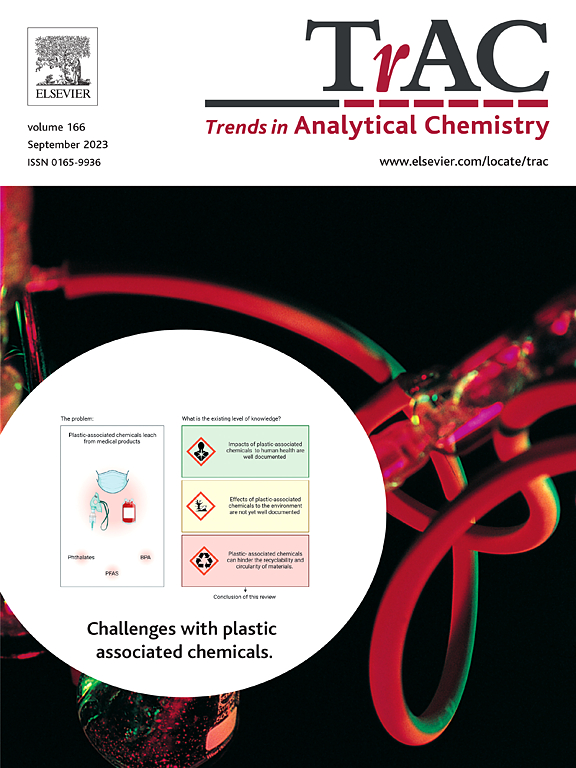塑料问题解决了吗?跨生态系统边界的合成亲水性聚合物对环境的影响
IF 12
1区 化学
Q1 CHEMISTRY, ANALYTICAL
引用次数: 0
摘要
合成亲水性聚合物是一类新兴的人为物质,但却被人们所忽视。与颗粒塑料不同,合成亲水性聚合物可与水发生作用,这使得研究它们在环境中的归宿和影响变得更加复杂。本综述讨论了这些聚合物在不同生态系统中的来源、归宿和影响。我们将家庭、农业和采矿业确定为主要来源。尽管对废水进行了处理,但合成亲水聚合物还是会进入天然水体。农用化学品和污水污泥的应用会将它们释放到土壤中。受极性和分子量的影响,吸附和凝结过程可能决定了它们在水生和陆地系统中的命运。缓慢的生物降解可能有利于它们的积累。为了增进我们对其归宿的了解,需要改进分析技术。生态毒性研究发现了急性效应,但缺乏对混合物以及与其他污染物相互作用的长期和实地研究。总之,现有文献强调了合成亲水聚合物的益处,却忽视了其潜在的负面影响;这就要求我们谨慎行事。本文章由计算机程序翻译,如有差异,请以英文原文为准。
Plastic problem solved? Environmental implications of synthetic hydrophilic polymers across ecosystem boundaries
Synthetic hydrophilic polymers are an emerging yet overlooked class of anthropogenic substances. Unlike particulate plastics, synthetic hydrophilic polymers can interact with water, which complicates studying their fate and effects in the environment. This review discusses the sources, fate, and effects of these polymers across ecosystem boundaries. We identified households, agriculture, and mining as major sources. Despite wastewater treatment, synthetic hydrophilic polymers enter natural waterbodies. Agrochemical and sewage sludge applications release them to soil. Sorption and coagulation processes, influenced by polarity and molecular weight, likely define their fate through aquatic and terrestrial systems. Slow biodegradation may favor their accumulation. To advance our understanding of their fate, analytical techniques need improvement. Ecotoxicity studies found acute effects but long-term and field studies on mixtures and interactions with other pollutants are lacking. All in all, the prevailing literature emphasizes benefits of synthetic hydrophilic polymers while neglecting potential negative consequences; this calls for precaution.
求助全文
通过发布文献求助,成功后即可免费获取论文全文。
去求助
来源期刊

Trends in Analytical Chemistry
化学-分析化学
CiteScore
20.00
自引率
4.60%
发文量
257
审稿时长
3.4 months
期刊介绍:
TrAC publishes succinct and critical overviews of recent advancements in analytical chemistry, designed to assist analytical chemists and other users of analytical techniques. These reviews offer excellent, up-to-date, and timely coverage of various topics within analytical chemistry. Encompassing areas such as analytical instrumentation, biomedical analysis, biomolecular analysis, biosensors, chemical analysis, chemometrics, clinical chemistry, drug discovery, environmental analysis and monitoring, food analysis, forensic science, laboratory automation, materials science, metabolomics, pesticide-residue analysis, pharmaceutical analysis, proteomics, surface science, and water analysis and monitoring, these critical reviews provide comprehensive insights for practitioners in the field.
 求助内容:
求助内容: 应助结果提醒方式:
应助结果提醒方式:


